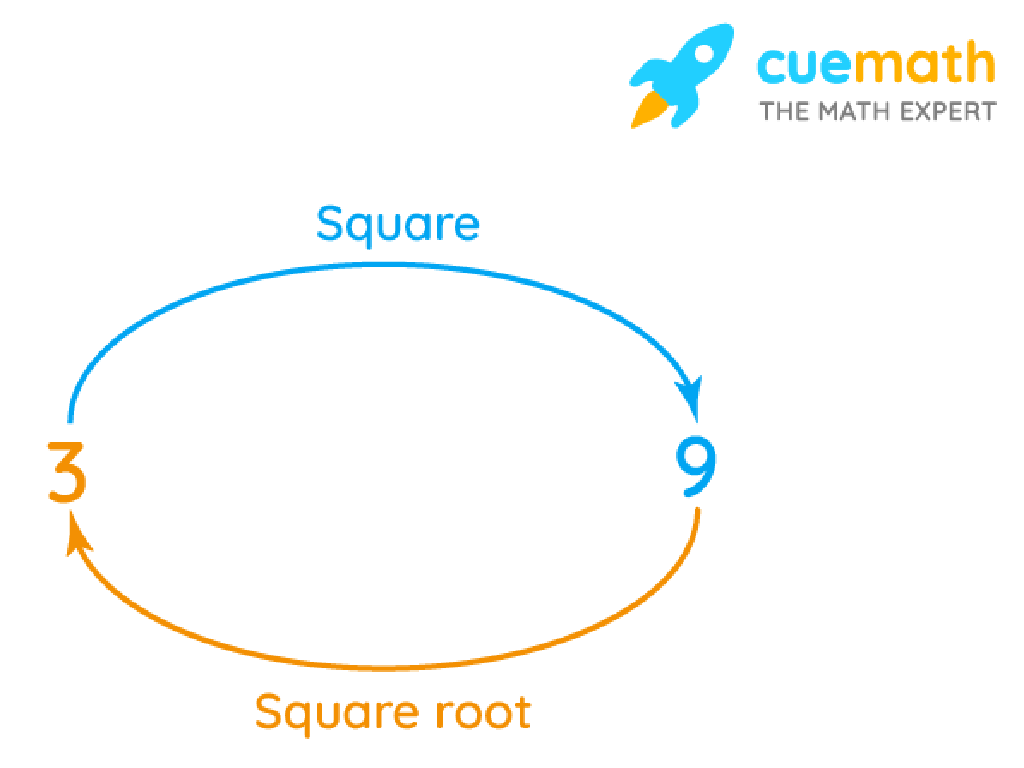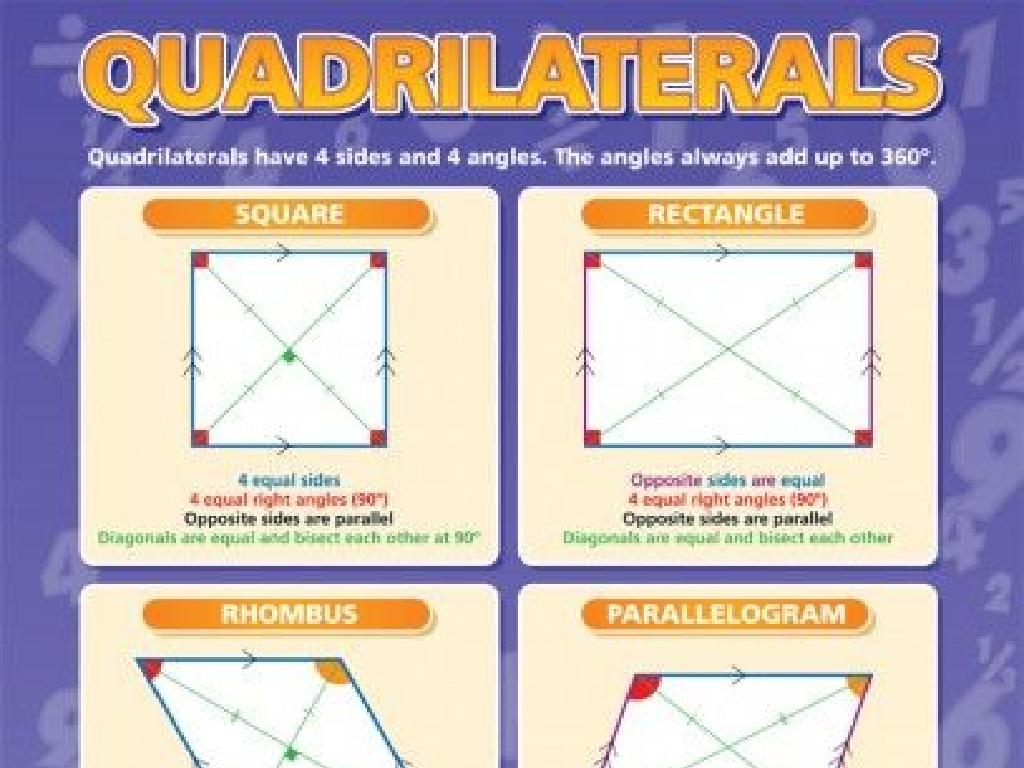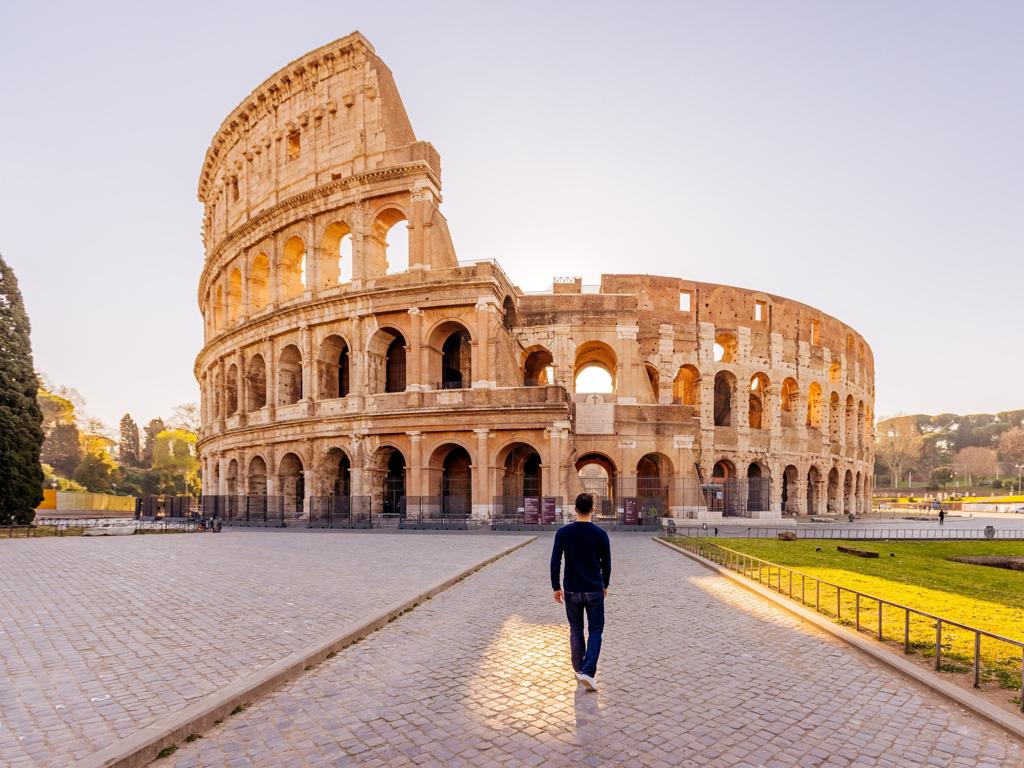Introduction To The Rock Cycle
Subject: Science
Grade: Eighth grade
Topic: Rocks
Please LOG IN to download the presentation. Access is available to registered users only.
View More Content
Welcome to the Rock Cycle!
– Explore the world of rocks
– Learn the rock cycle’s significance
– Rocks constantly change from one type to another, shaping our planet.
– Grasp the rock cycle stages
– Discover how igneous, sedimentary, and metamorphic rocks transform.
– Set goals for today’s lesson
|
This slide introduces students to the dynamic and ever-changing world of rocks, setting the stage for a deeper understanding of the rock cycle. Emphasize the importance of the rock cycle in geology and how it plays a crucial role in the formation of the Earth’s crust. Highlight the three main types of rocks and the processes that contribute to their transformation. The lesson objectives should be clearly outlined to give students a roadmap of what they will learn and achieve by the end of the class. Encourage curiosity and questions as students embark on this geological journey.
What Are Rocks?
– Definition of rocks and minerals
– Rocks are solid natural substances composed of minerals
– Types of rocks: Igneous, Sedimentary, Metamorphic
– Igneous: formed from cooled magma, e.g., granite. Sedimentary: layered from deposition, e.g., limestone. Metamorphic: altered by heat/pressure, e.g., marble.
– Examples of each rock type
– Granite (Igneous), Limestone (Sedimentary), Marble (Metamorphic)
– Characteristics of rock categories
– Igneous: crystalline texture. Sedimentary: often layered. Metamorphic: foliated or non-foliated.
|
This slide introduces students to the basics of rocks and minerals, setting the foundation for understanding the rock cycle. Begin by defining rocks as aggregates of minerals, which are naturally occurring inorganic substances with a definite chemical composition. Discuss the three main rock types: igneous, formed from the solidification of magma or lava; sedimentary, created from the accumulation of sediment; and metamorphic, which are pre-existing rocks transformed by heat and pressure. Provide common examples for each type to help students identify them in real life. Highlight the key characteristics that differentiate these rock categories, such as texture and layering. Encourage students to bring rock samples if possible and share their observations.
The Rock Cycle Explained
– Continuous rock formation process
– Transformation of rock types
– Igneous to sedimentary to metamorphic and back
– Impact of weathering and erosion
– Breakdown and transport of rock material
– Effects of heat and pressure
– Create metamorphic rocks through intense conditions
|
The rock cycle is a continuous and dynamic process that describes the transformation of rocks through various geological phenomena. It’s important to understand that rocks don’t follow a linear path but can change from one type to another in any order. Weathering and erosion play crucial roles in breaking down rocks into smaller pieces, which can then be transported and deposited to form sedimentary rocks. Over time, with the application of heat and pressure, these rocks can become metamorphic. Additionally, intense heat can melt rocks, leading to the formation of igneous rocks when the magma cools. This cycle is essential for understanding Earth’s surface and the processes that shape it. Encourage students to think of real-life examples of these processes and how they might have observed them in their environment.
Igneous Rocks: Earth’s Natural Building Blocks
– Formation from magma and lava
– Igneous rocks form as magma cools and solidifies, either below (intrusive) or on (extrusive) Earth’s surface.
– Characteristics of igneous rocks
– They are typically hard, with a crystalline structure, and may be fine-grained or coarse-grained.
– Examples: Granite and Basalt
– Granite is used in construction, Basalt in road base materials.
|
Igneous rocks are one of the three main rock types and form from the cooling and solidification of magma or lava. Magma that cools slowly beneath the Earth’s surface creates intrusive igneous rocks like granite, which has a coarse-grained texture. Lava that cools quickly on the surface forms extrusive igneous rocks like basalt, which is fine-grained. These rocks are categorized based on their mineral composition and texture. Discuss the importance of igneous rocks in the rock cycle and their various uses in everyday life. Encourage students to bring examples of igneous rocks and discuss their characteristics in the next class.
Sedimentary Rocks: Formation and Characteristics
– How sedimentary rocks form
– Formed by compaction of sediments over time
– Key characteristics of sedimentary rocks
– Often layered, contain fossils, and are porous
– Example: Sandstone
– Composed of sand grains, often forms in deserts/rivers
– Example: Limestone
– Made from skeletal fragments of marine organisms
|
This slide introduces sedimentary rocks, emphasizing their formation through the compaction of sediments. Highlight the distinctive features of sedimentary rocks, such as their layered appearance, potential to contain fossils, and porosity. Use sandstone and limestone as concrete examples to help students visualize and understand the concepts. Sandstone is typically found in desert or river environments and is recognizable by its sand grain composition. Limestone, on the other hand, is primarily composed of calcium carbonate from the remains of marine organisms. Encourage students to think about the environments where these rocks might form and the long processes involved in their creation.
Metamorphic Rocks: Transformation and Characteristics
– Formation through heat and pressure
– Intense conditions alter rock’s structure
– Distinctive metamorphic features
– Look for foliation and mineral alignment
– Example: Slate from shale
– Slate is durable and used in construction
– Example: Marble from limestone
– Marble is prized for sculpture and building
|
Metamorphic rocks are formed from pre-existing rocks that have been transformed by extreme heat and pressure within the Earth’s crust. This process can result in significant changes in texture, mineralogy, and chemical composition. Key characteristics to observe in metamorphic rocks include foliation, which is the alignment of minerals within the rock that can give it a layered appearance, and mineral alignment due to pressure. Examples to discuss include slate, which originates from shale and is commonly used for roofing and flooring due to its durability, and marble, which forms from limestone and is widely used in art and architecture for its beauty and workability. Encourage students to think about how these rocks can be identified and used based on their properties.
Rock Cycle Case Study: Journey of Granite
– Trace a rock’s journey
– Follow one rock through the cycle, noting changes over time
– Transitions between rock types
– Learn how rocks metamorphose, erode, and reform
– Granite: A case study
– Explore granite’s transformation from magma to a stable rock
– Real-world rock cycle implications
|
This slide aims to illustrate the dynamic process of the rock cycle by following the journey of a granite rock. Students will learn how rocks undergo transformations between different types: igneous, sedimentary, and metamorphic. By using granite as a case study, we can explore its origins from cooling magma and its eventual weathering and erosion that contribute to the formation of sedimentary rocks. Emphasize the real-world implications of the rock cycle, such as soil formation and landscape changes. Encourage students to think about the long timescales involved in these processes and how they shape the world we live in.
Human Impact on the Rock Cycle
– Human activities and the rock cycle
– Effects of mining on rocks
– Mining can hasten erosion, altering rock formation.
– Construction impact on rock cycle
– Construction can disrupt natural processes, leading to faster rock changes.
– Environmental and sustainability concerns
– Sustainable practices can minimize negative impacts on the rock cycle.
|
This slide aims to educate students on how human activities, such as mining and construction, can significantly accelerate the natural processes of the rock cycle. It’s crucial to discuss how these activities can lead to increased erosion and sedimentation, which can alter the formation and breakdown of rocks. Additionally, the slide will touch upon the importance of environmental considerations and the adoption of sustainable practices to mitigate the negative impacts on the rock cycle. Encourage students to think critically about the balance between human development and the preservation of our planet’s geological integrity.
Class Activity: Rock Cycle Role-Play
– Divide into groups for rock types
– Role-play your rock’s transformation
Igneous to sedimentary, sedimentary to metamorphic, etc.
– Discuss the transformation process
How does pressure, heat, and time change rocks?
– Reflect on the activity outcomes
What did you learn about the rock cycle?
|
This interactive class activity is designed to help students understand the rock cycle through a hands-on role-play. By dividing the class into groups, each representing a different type of rock (igneous, sedimentary, metamorphic), students can actively engage with the concept of transformation in the rock cycle. Each group will simulate the conditions that lead to their rock type changing into another, such as the application of heat and pressure or weathering and erosion. After the role-play, lead a discussion to help students articulate the process and reflect on what they’ve learned. This will solidify their understanding of the dynamic nature of rocks and the geological forces that shape them. Possible activities include creating a skit of the rock transformation, drawing a comic strip of their rock’s journey, or writing a first-person narrative from the rock’s perspective.
Rock Cycle Recap & Conclusion
– Summarize the rock cycle
– The continuous process of rock formation, breakdown, and reformation
– Recap rock types & transformations
– Igneous, sedimentary, metamorphic; changes via melting, erosion, heat/pressure
– Engage in a Q&A session
– Clarify any doubts
|
As we conclude our lesson on the rock cycle, it’s important to review the key concepts. The rock cycle is a continuous process where rocks are transformed from one type to another. Highlight the three main rock types: igneous, formed from cooled magma; sedimentary, from compacted sediments; and metamorphic, altered by heat and pressure. Encourage students to ask questions during the Q&A to ensure they understand how rocks can change form through natural processes like melting, erosion, and subjection to heat and pressure. Use this opportunity to assess comprehension and correct any misconceptions.





